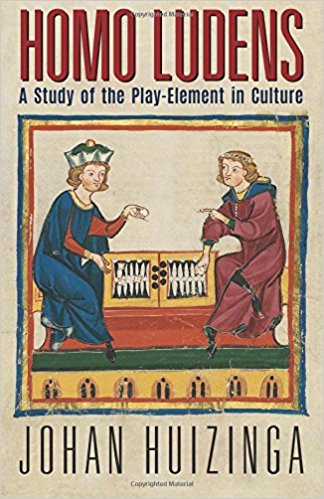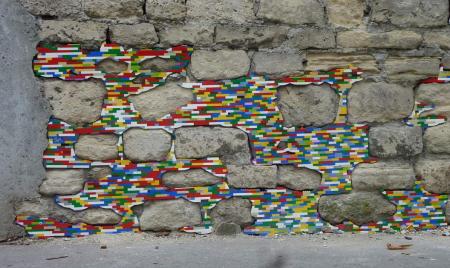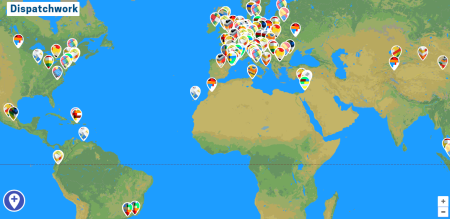“The incidence of play is not associated with any particular stage of civilization or view of the universe. Any thinking person can see at a glance that play is a thing on its own . . .” (Johan Huizinga, Homo Ludens)
“we are “we”, every now & then; at games.” (Henry Rollins)

The Creator series by LEGO® used to have an age limit from 0-99. Many LEGO® boxes now have much more restricted age limits. For example, the VW Camper Van and the Super Star Destroyer, are both rated 16+. The Death Star has a lower age limit of 12+.
Berlin-based artist Jan Vormann (Bamberg, 1983), does not pay much attention to the suggested age limits, or “construction guidelines”. In fact, since 2007, Vormann has only been playing more and more LEGO®; in more than 40 countries across the world; inviting you, me, & everyone, to participate.
 Dispatchwork, is described (on the project’s website) as an ongoing, worldwide game, using, re-claiming, and re-building, public spaces around the world. So far, 100s of people have participated in over 40 different countries; using LEGO® bricks to repair holes in walls, close cracks, fix fissures in facades. (LEGO® pieces, it appears, are also known as, or, more accurately, part of a larger family, dubbed, “Plastic Construction Bricks” (PCBs)1
Dispatchwork, is described (on the project’s website) as an ongoing, worldwide game, using, re-claiming, and re-building, public spaces around the world. So far, 100s of people have participated in over 40 different countries; using LEGO® bricks to repair holes in walls, close cracks, fix fissures in facades. (LEGO® pieces, it appears, are also known as, or, more accurately, part of a larger family, dubbed, “Plastic Construction Bricks” (PCBs)1

Screenshot of Dspatchwork.info , go to the website & scroll left, right, up, down.
Jan Vormann intends for his work to be an open-ended, collaborative, self-(re)generative, game; a series of “urban interventions”; a theory and method of appropriating, bending the rules of one game, to create an new game:
Together we have infiltrated cultural heritage, facades and fortifications. From cottage to skyscrapers Dispatchwork has sealed and healed fissures, completed the material compilation in urban construction and added people and color to the greyscales of the cityscapes.
(un)pleasant design
Indeed, there are many ways in which Dispatchwork “overcomes national boundaries”, & allows people of all ages, backgrounds, to reclaim urban landscapes, spaces, places, for their own; while at the same time rebuilding bits, pieces, parts of a landscape, of a city. Dispatchwork invites, & creates, fun, playful, aesthetic, contributions, bits, parts, (otherwise often forgotten) corners, of cities. At the same time, it is also inevitably true that while in theory, everyone might be invited to play; in practice, some people will always be excluded.

Unplreasant Design, Gordan Savičić & Selena Savić, 2013.
Let us not forget that much, of many city-landscapes, exist of Unpleasant Design, (elegantly profiled in this episode of 99%invisible) as examined by Gordan Savičić & Selena Savić in a beautifully designed book (with sandpaper covers, in the colours of the Dutch police force), gathering “some of the most witty thoughts and images that described the popular phenomenon called hostile architectures, city design tricks or architectures of control.”
LEGO® = play = build = study
Considering Jan Vormann’s treatment, of play, as a kind of building, as well as a kind of studying (of a certain spot, moment, wall, monument, historical moment, of a city); finds expression in the very meanings of the word:
Lego 1954, proprietary name (in use since 1934, according to the company), from Danish phrase leg godt “play well.” The founder, Danish businessman Ole Kirk Christiansen (1891-1958), didn’t realize until later that the word meant “I study” or “I put together” in Latin. (at least, according to Etymonline ).
Ai Wei Wei’s Trace: from worlds with LEGO, to worlds in LEGO®
In many senses, Dispatchwork indeed breaks down national borders, borders between people, even within people (allowing people to (re)discover the playing (wo)man within themselves); while at the same time creating new connections between fellow builders, students, participants in this game; including an open-ended invitation for new players / participants, to join. In Dispatchwork, the game & building blocks of LEGO are used, by people across the world to create worlds of experience, within & across individuals, across the world.
LEGO® – or, “Plastic Construction Bricks” (PCBs), & a whole lot of them – are also used in Trace a 2011 installation by Chinese artist / activist Ai Wei Wei (1957, Beijing). Enough LEGO in any case, to put together 176 portraits. Enough LEGO also, for the LEGO company to initially block Ai Wei Wei’s order.2
According to LEGO, this initial refusal to sell a bulk order of LEGO bricks to Ai Wei Wei, was unrelated to the fact that the 176 portraits depicted in this installation are all of dissidents, activists, or prisoners of conscience.

Ai Wei Wei’s (Duchampian) protest against The Lego group
Rather, it seems to have been an internal mistake. Kjeld Kirk Kristiansen, grandson of the founder (of the Danish company, The Lego Group, 1949), maintains it was a mistake “made by an employee from the consumer service department who misinterpreted the company policy of political neutrality”.
Dispatchwork creates new worlds, by building LEGO into old / existing worlds / structures; crosses borders, opens up to the possibilities of constructing new experiences through play, & vice versa. Trace is an installation made up of an endless plain / plane of LEGO – 1.2 million pieces no less – that emphasises borders, separation. Explains Hirshhorn Museum curator Melissa Chiu; the pieces, “are arranged in six zones, with approximately 30 portraits per zone. Each zone . . approximately 400 individual panels.”
Ludizid, an exhibition of work by Jan Vormann, including installations related to Dispatchwork, as well as two other works can be seen in the Grimmuseum, Berlin, until coming Saturday, March 31, 2018.
From the Grimmuseum website:
Jan Vormann often works in public space. With Dispatchwork he initiated a project eleven years ago, in which he seals cracks and fissures in facades by using Legos. Worldwide everybody is invited to participate in this urban intervention and to upload the documentation on the website.
In his forthcoming exhibition Ludizid at Grimmuseum, Jan Vormann will present three new works. Besides a new exhibition architecture for Dispatchwork, he will show the current version of his Soapbubble life-extension machine, a machine which keeps bubbles alive by protecting them against gravity and dehydration.
His work Afterparty consists of deformed balloons and takes up a motif that recurrs in all of Vormann’s works: the liminal space between pleasure and uneasiness.
Jan Vormann arbeitet oft im öffentlichen Raum. Mit Dispatchwork hat er vor elf Jahren ein Projekt initiiert, bei dem er Risse und Spalten in Fassaden mit Legosteinen versiegelt. Weltweit kann jeder an dieser urbanen Intervention teilnehmen und die Dokumentation auf die Webseite hochladen. In seiner Ausstellung Ludizid im Grimmuseum wird Jan Vormann drei neue Arbeiten zeigen.
Neben einer neuen Ausstellungsarchitektur für Dispatchwork, wird die neueste Version seiner Seifenblasen-Lebenserhaltungs-Maschine präsentiert – eine Konstruktion, bei der Seifenblasen vor Austrocknung und Schwerkraft bewahrt und somit am ‚Leben’ erhalten werden. Mit seiner aus deformierten Luftballons bestehenden
Arbeit Afterparty greift Vormann ein Motiv auf, das auf die eine oder andere Art und Weise in allen seinen Arbeiten mitschwingt: der schmale Grad zwischen Heiterkeit und Unbehagen.
1. In, “Data, Tech, & Policy”, 2014. https://is.gd/vYxF9F . & “TECNOSCIENZA: Journal of Science & Technology Studies” Vol. 6. No.2. 2015. https://is.gd/Y7Rgon .
2. Guardian Newspaper, 24 October, 2015 https://is.gd/xEE9e0 .
